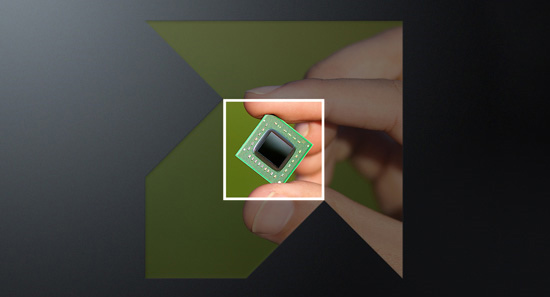Advanced Micro Devices may not have a clear product roadmap for 2015, when it essentially will continue selling current-generation products and will not increase performance of its chips significantly. Nonetheless, the company pins many hopes on its 2016 lineup when it will have a number of new products that are expected to be considerably more competitive compared to those available today or in 2015.
In 2016 AMD plans to introduce two new general-purpose microprocessor architectures: K12 high-performance ARMv8-A compatible architecture that is expected to significantly strengthen AMD’s positions on the market of ARM servers; as well as Zen high-performance x86 micro-architecture that is projected to return AMD to high-performance desktops and servers. Both micro-architectures are expected to play a tremendously important role in AMD’s future. The company seems to be optimistic about its competitive positions in 2016 and onwards.
“What I am excited about going forward is that you go into 2016 and beyond,” said Mark Papermaster, chief technology officer of AMD, at Barclays Global Technology Conference. “You will start to see the benefit of those new IPs, which have a long lead-time development. So new CPU cores, new graphics solutions with yet again much higher performance per watt, we will continue our pace going forward and again it is going to be an AMD about getting great products, with a very, very deep partnership with our customers.”
Unfortunately, it is completely unknown when exactly AMD introduces its new products based on Zen and K12 architectures. Traditionally the company unveils new accelerated processing units early in the year, but the situation may be different with new-generation products.
AMD’s products based on K12 and Zen micro-architectures are expected to be made using 14nm FinFET fabrication process at GlobalFoundries and 16nm FinFET manufacturing technology at TSMC. One of the things to keep in mind about AMD’s manufacturing from 2015 and later is that it will mostly use general-purpose process technologies. At present AMD’s A-series “Kaveri” chips are made using 28SHP (28nm super high-performance) fabrication technology that was specifically developed for AMD. Going forward AMD plans to use only default versions of manufacturing processes in order to unify its IP building blocks. While this will lower AMD’s expenses, clock-rate potential of its chips will be lower.
Discuss on our Facebook page, HERE.
KitGuru Says: What is completely unknown is what kind of new products AMD plans to offer. While we can be sure about hybrid accelerated processing units with general purpose ARM or x86 cores as well as graphics processing hardware, it is unknown whether AMD will return to the market of “classic” desktop microprocessors without integrated graphics.
 KitGuru KitGuru.net – Tech News | Hardware News | Hardware Reviews | IOS | Mobile | Gaming | Graphics Cards
KitGuru KitGuru.net – Tech News | Hardware News | Hardware Reviews | IOS | Mobile | Gaming | Graphics Cards




It is sure thing that they will give the production to a GloFo. According to articles online they finnally have a contract for complete future lineup
who cares if clock rates go lower so long as there is ipc improvements with software developers adopting HSA such that intel based system becomes obsolete
Except Intel won’t go obsolete. Google Glass 2 is going to use a Broadwell or Skylake-based Atom chip. that’s a serious product. Furthermore, Intel is already caught up to Kaveri in heterogeneous design. It implements unified memory and is fully OpenCL 2.0 capable while more than doubling compute performance. Intel won’t be obsolete for a very, very long time. Furthermore, IPC has an upper limit of 1 (the average of clock cycles per instruction cannot go below 1). After that clock rates and core count are all that matter.
It sounds like a politician with promises in 2016. One year without new products? And I bet Intel and Nvidia will wait for them.
Well if they are not going to bring new products in the market, at least they should bring their best offerings to all platforms that are not dead. They should lower farther the prices for AM3+ processors, bring more Kaveri models on FM2+ and introduce at least a three module design, bring Beema at AM1 and do whatever they can do with Carizzo in mobiles.
In other words you’ll be getting 2014 hardware but at low clock rates come 2015 and their Zen K12 is going to save them all while their powering the consoles, Okay got it.
PhoneyVirus
https://twitter.com/PhoneyVirus
https://phoneyvirus.wordpress.com/
As if increasing IPC is easy. If they can’t hit ~3.5GHz with Zen then they’ll have to have higher IPC than Intel’s current cores, and who knows what Intel’s upcoming cores will bring to the table. As it is, they’ll have to design better cores with a far smaller budget, with less people, while relying on TSMC and GF to fab their chips when they’re ready. Honestly it sounds like they need to hit a bullseye no larger than a penny from 5 miles away.